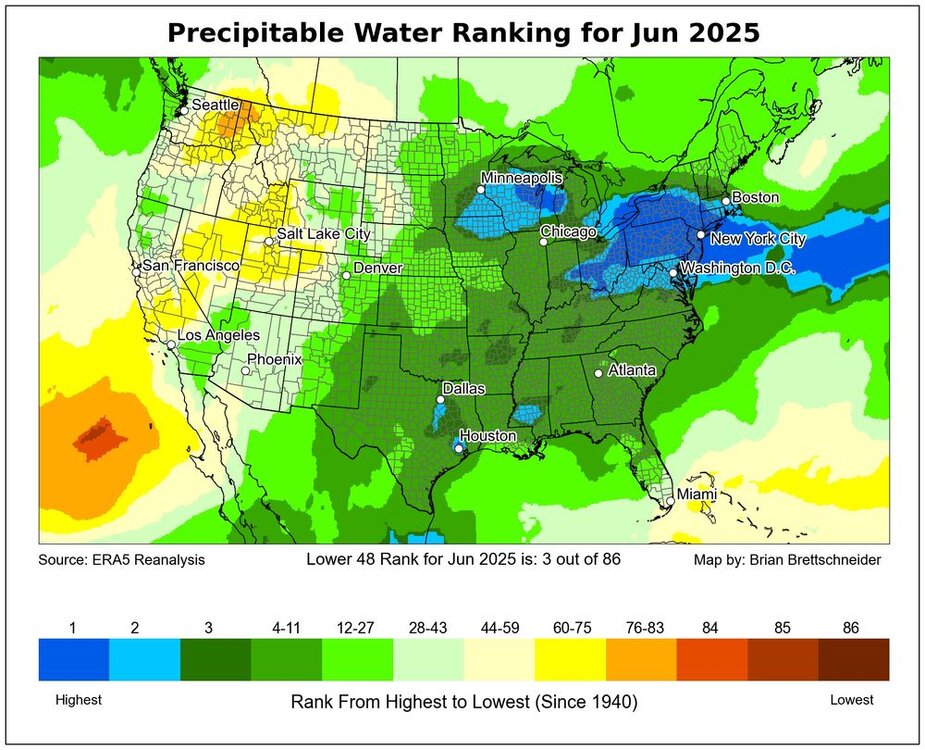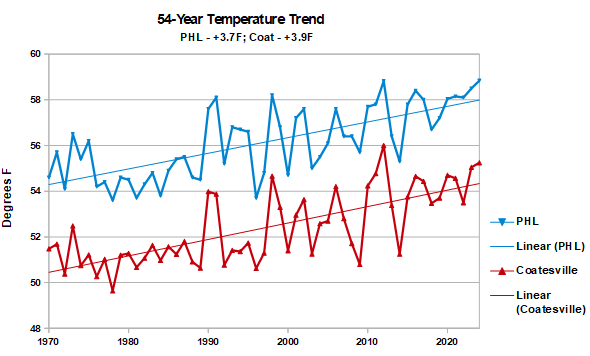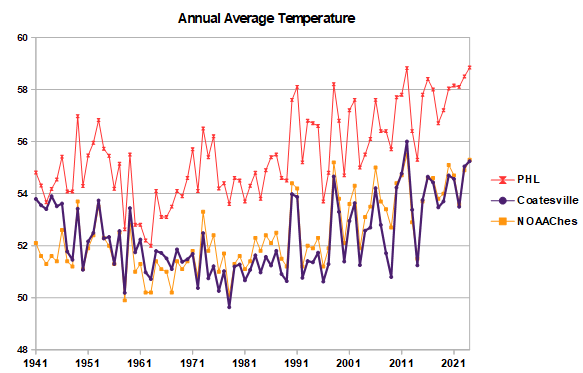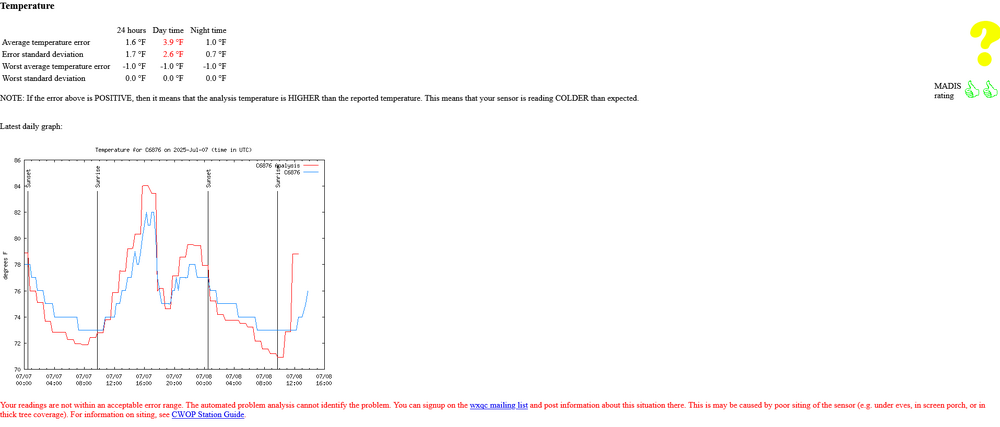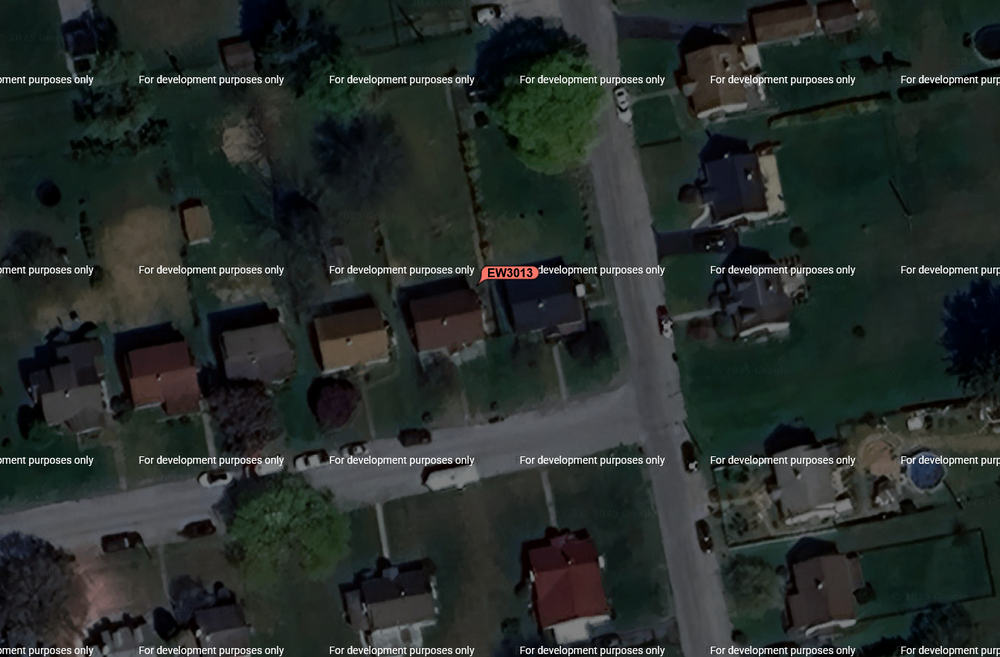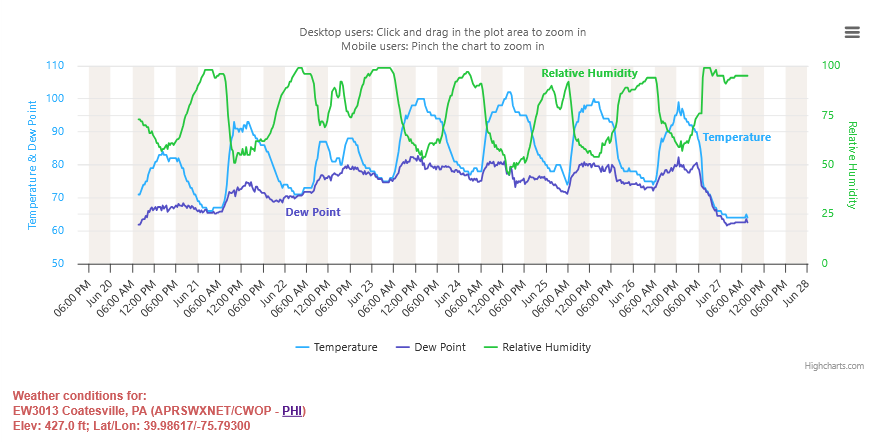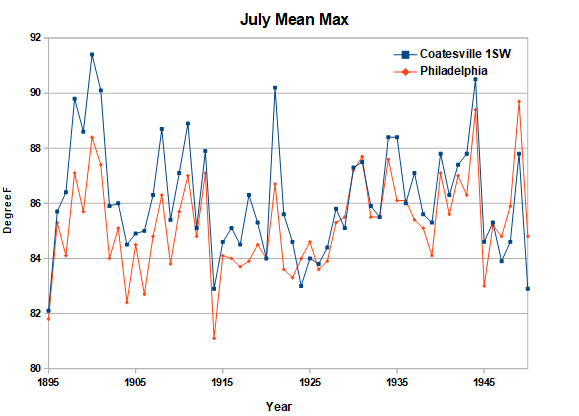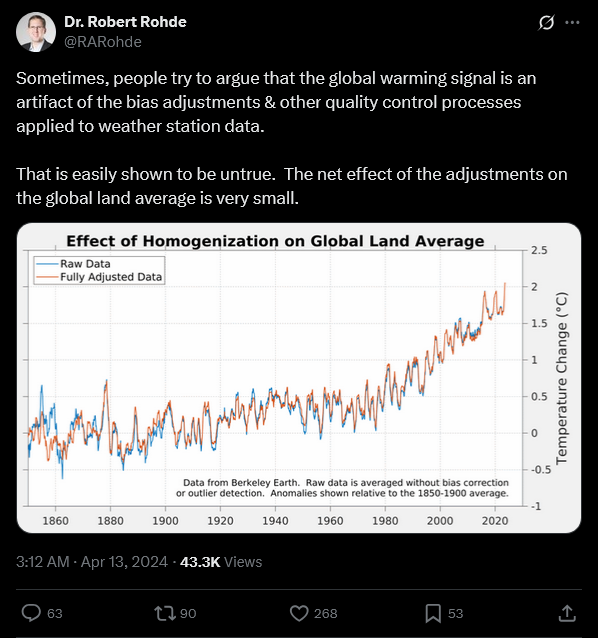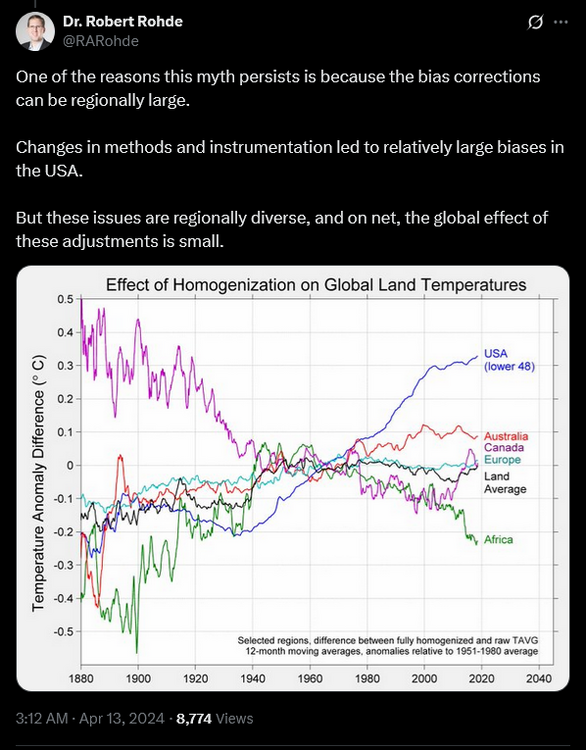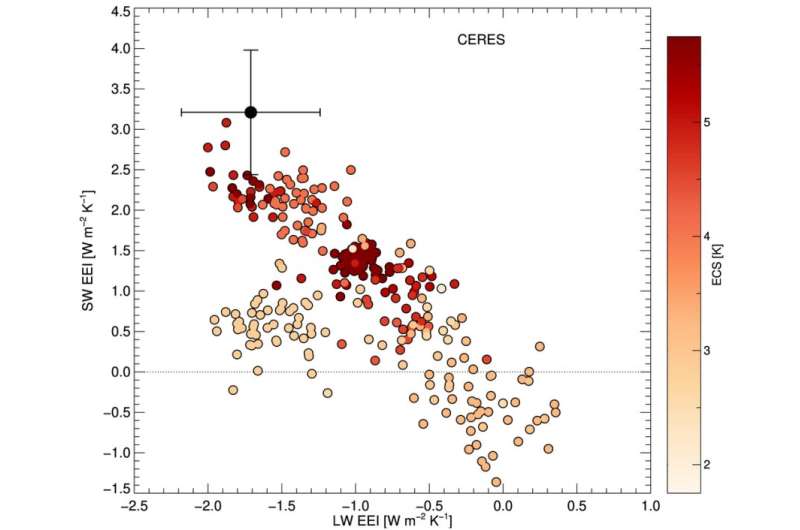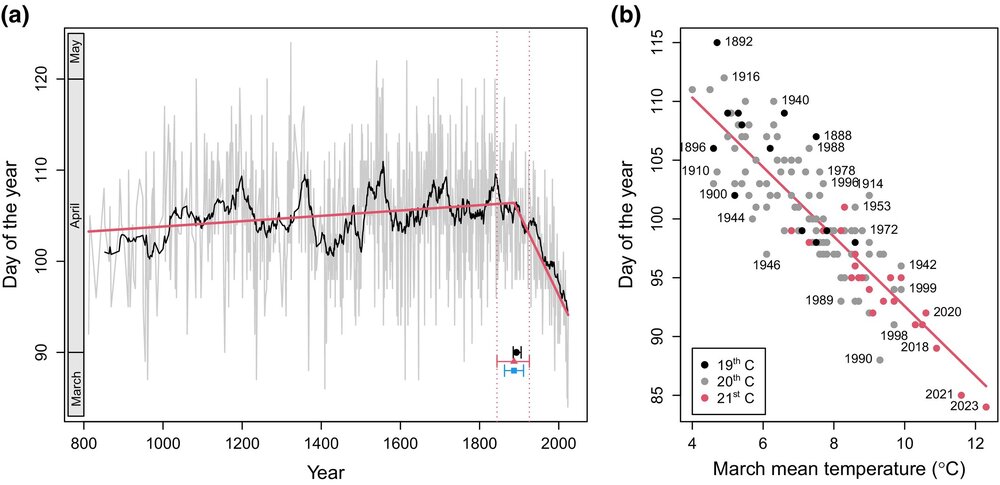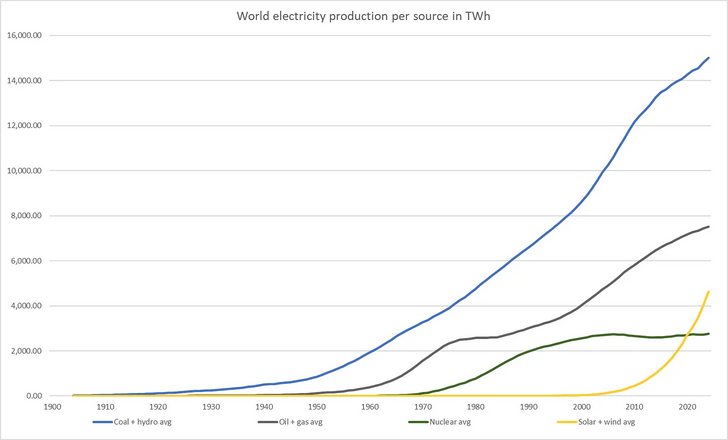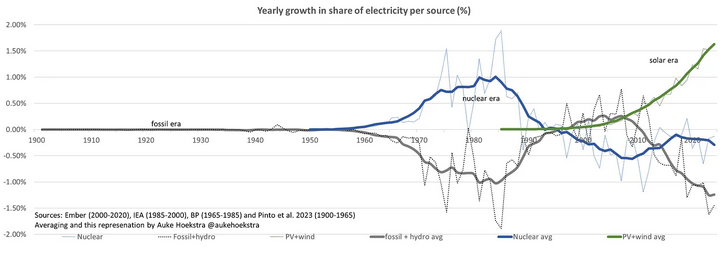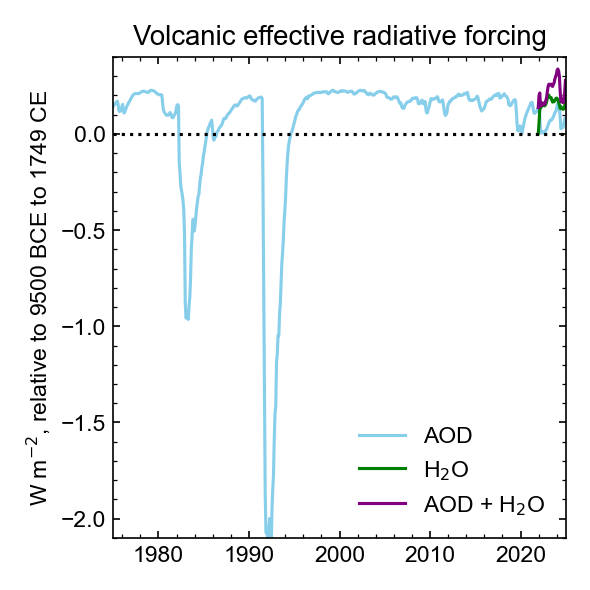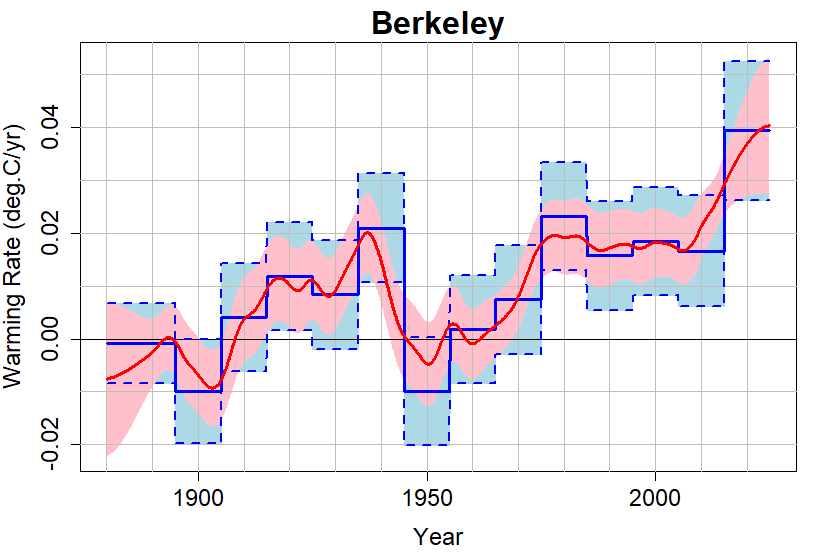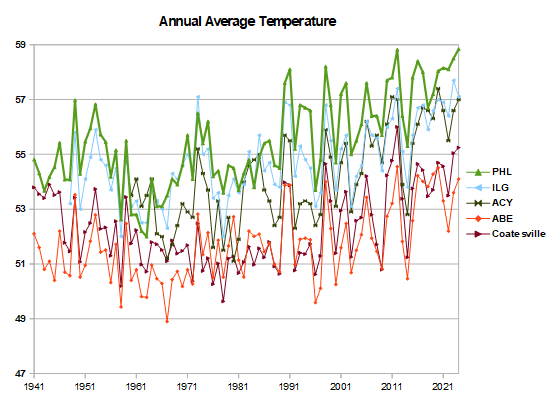
chubbs
Members-
Posts
3,910 -
Joined
-
Last visited
Content Type
Profiles
Blogs
Forums
American Weather
Media Demo
Store
Gallery
Everything posted by chubbs
-
This is a good recent review article. Anthropogenic intensification of short-duration rainfall extremes https://hal.inrae.fr/hal-03838107v1/file/2021_Fowler_Nature reviews earth%26environment.pdf
-
-
Chester County PA - Analytical Battle of Actual vs. Altered Climate Data
chubbs replied to ChescoWx's topic in Climate Change
So for Phoenixville what is the difference between ghost and actual? -
Chester County PA - Analytical Battle of Actual vs. Altered Climate Data
chubbs replied to ChescoWx's topic in Climate Change
It isn't clear what you did. What stations were used for the red line? The stations listed in your post: Phoenixville, West Grove, Coatesville, Glenmoore, Honey Brook, West Chester and Devault? If so it's a much different set of stations vs the blue that could easily explain the differences between the two lines. -
Chester County PA - Analytical Battle of Actual vs. Altered Climate Data
chubbs replied to ChescoWx's topic in Climate Change
How IEM estimates missing values is explained on the IEM site. Likewise NOAA/NCEI's method is explained in peer reviewed articles and other documentation. No sleuthing, no tin foil hat, needed. You didn't answer my question about the stations used for your red and blue lines. Wonder why. -
Chester County PA - Analytical Battle of Actual vs. Altered Climate Data
chubbs replied to ChescoWx's topic in Climate Change
Yes, the facts. Can you list the stations that the red and blue lines were derived from? -
Chester County PA - Analytical Battle of Actual vs. Altered Climate Data
chubbs replied to ChescoWx's topic in Climate Change
Thinking about this. The chart tells us more about your method than it does about "ghost data". The "ghost data" is a simple re-analysis product developed by IEM. There is no bias adjustment. Raw data from available sites is used to back fill for missing data at other stations. So you are plotting raw data vs raw data. Not sure what you did, but guessing that the main difference between the two charts is the station population. Your base analysis, the blue line, starts with a relatively warm station population and transitions to a cool group. Which completely hides local warming. Use a group of stations with less cooling bias and the warming re-appears. Thanks for illustrating how your method distorts our local climate. Of course the red line still underestimates warming because station moves and other station changes are included. -
Chester County PA - Analytical Battle of Actual vs. Altered Climate Data
chubbs replied to ChescoWx's topic in Climate Change
18 years is a short period so there is uncertainty in the individual station slopes. Here are a couple of charts that cover a longer period. Local warming has been roughly 7F per decade for the past 54 years. Warming has sped up over the past 15-20 years globally so higher rates of warming locally recently wouldn't be surprising. But, a longer period of time is needed to say anything definitive. What we can say is that there is no evidence that Chester County is warming any differently than other regional sites. Can also see that the Coatesville station moves in 1946/47 makes raw data before then unusable for climate trend purposes. -
Came across a paper on the North Atlantic marine heatwave of 2023. Light winds were the main cause not ocean transport. Supports the idea that this years Atlantic cooling is due to stronger winds. https://www.nature.com/articles/s41586-025-08903-5
-
Chester County PA - Analytical Battle of Actual vs. Altered Climate Data
chubbs replied to ChescoWx's topic in Climate Change
Thanks for the info. The old Coatesville COOP didn't have fan aspiration either. None of the older stations did. Another reason to remove station changes from the raw data. That is an interesting site. The average daytime error on your own station over the past 7 days, 3.9F, is almost as high as the Coatesville station but in the other direction. The main message here is that every station is different. You can't throw a changing station population into a spreadsheet, take a simple average, and expect to get the right answer. -
Chester County PA - Analytical Battle of Actual vs. Altered Climate Data
chubbs replied to ChescoWx's topic in Climate Change
Found a MADIS site in Coatesville that is close to the WWII location of the Coatesville COOP. Per google map shot below, the area around the current station is less built up, with larger lot sizes, than the old COOP site which I have posted previously. Per chart below, the current Coatesville station hit 100 3 days in a row during the recent heat wave, topping out at 102.2. During the heat wave, high temperatures at the station ran roughly 1F warmer than the Philadelphia airport. Interestingly, the Coatesville COOP also ran roughly 1F warmer than the Philadelphia airport in June and July during WW2. Indicating that the current MADIS station is a good match to the Coatesville COOP before it's move to a cooler location in 1946+47. Warmer July highs than Philadelphia were not unusual Coatesville before the 1946 and 1947 moves to a cooler, more rural, location. Shows how warm the Chesco COOPs were back in the day and the mismatch between older and modern stations in Chester County. Another datapoint that supports scientific methods to remove station moves and other network changes that contaminate raw temperature data. -
Chester County PA - Analytical Battle of Actual vs. Altered Climate Data
chubbs replied to ChescoWx's topic in Climate Change
Don't forget your tin hat. -
Chester County PA - Analytical Battle of Actual vs. Altered Climate Data
chubbs replied to ChescoWx's topic in Climate Change
As I thought "ghost data" is a big nothing burger. A figment of the denier imagination. The estimates are made by IEM not NOAA. Below is IEM's rationale for providing estimates. Why do this? Previously, the IEM has only provided raw observations with limited quality control checks in place. Quality control is hard! Many times, users are simply looking for something "close" and perhaps not as perfect as high quality sensor observations can be. Producing a gridded analysis is one way to produce a dataset from point observations which can be sampled as a means of spatial interpolation. https://mesonet.agron.iastate.edu/iemre/ -
Chester County PA - Analytical Battle of Actual vs. Altered Climate Data
chubbs replied to ChescoWx's topic in Climate Change
Don't know what you are talking about. Can you provide a link to the so called "ghost data". -
You complain about being called a denier; but, your posts are the same old denier talking points or charts. Long debunked. Science moved on from this issue decades ago.
-
JB is just showing his lack of understanding of how the earth's climate works. Making a very simplistic argument that ignores the structure of the ocean. He needs to show that changes heat released at the bottom of the ocean made it all the way to the surface. The data is available from argo floats which get subsurface temperatures down to 2000m around the oceans. If seismic was driving our climate or having any significant impact at all we would know about it. I posted info previously which showed that the sun warms the ocean from the top down. Surface waters are less dense because they are warmer. In contrast the the waters at the bottom of the ocean where the vents are located are very cold and dense. That makes the ocean very stable. Ocean flow at the bottom of the ocean is horizontal in most locations. There is no way for changes in seismic activity to impact surface temperatures directly above the Atlantic vents. The only mixing between bottom and surface waters occurs in the arctic and antarctic where surface waters are cold enough to sink to the very bottom of the ocean. That's where the effect of any change in seismic heating would be felt at the surface. There is a much simpler explanation for the changes in the past year: changes in surface wind speed. Since warming is top down, The waters just below the surface are always cooler. Higher winds cool the surface waters by promoting mixing. Light winds allow surface waters to warm. Wind driven mixing usually extends to roughly 100m. I showed a chart upthread which showed that surface winds in the area that cooled are higher this year vs last.
-
Chester County PA - Analytical Battle of Actual vs. Altered Climate Data
chubbs replied to ChescoWx's topic in Climate Change
The Chester County deep-dive has shown that a county station average is a terrible way to evaluate NOAA. The available stations aren't designed to produce county averages by simple averaging and the stations change with time. The average shelf life of a coop station isn't very long. Even stations with long-term records have station moves and equipment changes. The NOAA method is well proven for getting the right answer from a constantly changing station network. If the stations didn't change then simpler methods would also work; but, as we have seen in Chester County the simpler methods breakdown when there are large changes in the station network with time. -
An interesting study that helps explain other recent findings. Plain Language Summary Analysis of satellite observations shows that in the past 24 years the Earth's storm cloud zones in the tropics and the middle latitudes have been contracting at a rate of 1.5%–3% per decade. This cloud contraction, along with cloud cover decreases at low latitudes, allows more solar radiation to reach the Earth's surface. When the contribution of all cloud changes is calculated, the storm cloud contraction is found to be the main contributor to the observed increase of the Earth's solar absorption during the 21st century. The paper also discusses the causes. An important contributing factor is a shift of clouds polewards in part due to Hadley Cell expansion. https://agupubs.onlinelibrary.wiley.com/doi/10.1029/2025GL114882
-
Another paper in the high climate sensitivity camp. This paper says that low-climate sensitivity models can't match CERES satellite radiation measurements, i.e. climate models are underestimating warming on average. "The CERES satellite measures Earth's energy imbalance—specifically, how much solar radiation is absorbed compared to how much heat (longwave) radiation is emitted back into space. The data show a significant increase in absorbed solar radiation, partly due to reduced snow and ice cover, but also because of changes to clouds. At the same time, Earth is emitting more heat, driven by rising surface temperatures. The satellite measurements have been compared with results from 37 climate models. The study shows a clear connection between climate sensitivity in the models and the ratio between increased absorbed solar radiation and increased heat radiation from Earth. Climate models with low climate sensitivity show small changes in the energy imbalance in the individual contributions from absorbed solar radiation and increased terrestrial radiation from Earth, and are less able to reproduce what is measured from satellite data." https://phys.org/news/2025-06-climate-sensitivity-greenhouse-gases-align.html https://www.science.org/doi/10.1126/science.adt0647
-
New paper analyzing the flowering date of Kyoto Cherries. Warming began to impact cherry flowering around 1890. Per the paper, urbanization and changes in cultivation are unlikely to have had much impact at that time. https://nph.onlinelibrary.wiley.com/doi/10.1111/nph.70268
-
Solar by the numbers. The solar age is here. https://aukehoekstra.substack.com/p/the-coming-solar-era-in-numbers
-
No I haven't changed my views. Here's an estimate of volcanic forcing through the end of 2024. Sulfur from HT has decreased faster than H2O, so the current impact of HT has changed from neutral to warming, but the effect is small, and partially balanced by a small volcano last year. Note that there has been a slight increase in volcanic activity in the past 5 years. So volcanoes would be producing a slight cooling without the HT water vapor.
-
Blog article by Tamino on paper using statistics to determine if warming has accelerated. The paper is being revised in response to peer review comments. The updated statistics estimate that the warming rate has roughly doubled in the past decade. We are have received 2 decades of warming in the past decade. Tamino notes that some slowing off this spike should be expected. https://tamino.wordpress.com/2025/06/08/picking-up-speed/#more-12598
-
You have Chester County as warm as Philadelphia in 1942. That's your UHI problem. Other local data warms in line with Philadelphia. including Coatesville after its 1946+47 station moves. Chester County only had 3 stations in the 1930s, 40s and 50s. Two of them, Coatesville in 1946+47 and West Chester in 1970, had station moves from town---> rural that produced roughly 2F cooling. Since you aren't correcting for station moves and network changes you are baking a reverse heat island effect into your calculations. Surprised a heat island expert like yourself, can't understand that.
-
Nope, I was just matching the years when you claimed the Philadelphia Airport was having a big heat island effect. I am happy to go further back. I extended my chart back to 1941, the origin of temperature data collection at the Philadelphia airport. The Philadelphia airport matches Coatesville fairly well until the big Coatesville station moves in 1946 and 1947, whose effect is clearly seen. Before the station moves, the Coatesville station was located in a built up section of the City of Coatesville. Roughly as warm as the Philadelphia Airport. Not representative of Chester County. The big heat island effect on this chart is in Chester County not Philadelphia. The reverse heat island due to the Coatesville station move to a more rural location. The West Chester station experienced a similar move to a cooler, less built-up, location in 1970. The 1970s are cool in your chart because of faulty analysis. If you correct for the station moves and other network siting changes over the years, like NOAA does, the 1970s don't stand out as a cool decade. Funny that you complain about heat island effects in Philadelphia but ignore them in Chester County.


